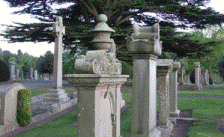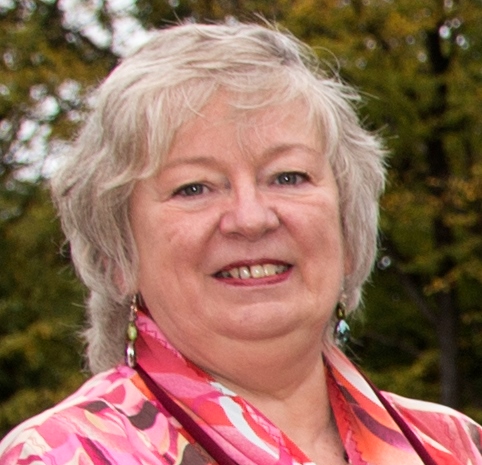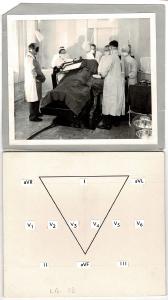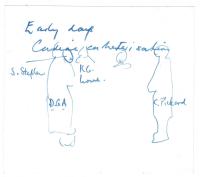- (Child) Birth*: Prof Kenneth G Lowe was born circa 1917.
- (Deceased) Death*: He died on 13 August 2010 at Dundee, Angus, Scotland,
 , Courier intimations [Aug 2010].
, Courier intimations [Aug 2010]. - (Witness) Photograph: He is in this photograph taken circa 1952 at Royal Infirmary, Dundee, Scotland,
 , along with Dr Douglas George Adamson MBChB MD FRCP consultant physician, CARDIAC CATHETERISATION
, along with Dr Douglas George Adamson MBChB MD FRCP consultant physician, CARDIAC CATHETERISATION
This technique was first investigated around 1860 by Chauveau and Marey in France, using horses who happily munched hay during the procedure. The aim was to measure pressures inside the ventricles of the heart. Because of the growing awareness about bacterial contamination, the procedure was not performed in human subjects until 1929, when Forssman experimented on himself. Improvements in X-ray technology led to the possibility of clinical use in 1941. Kenneth Lowe introduced the method in Dundee in the early 1950s, having seen the technique used in London after the war. This photograph shows the first cardiac catheterisation in Dundee, carried out in DRI. Those present were (from left to right) Dr. C Pirie (consultant audiologist), the theatre nurse, Dr Lowe, Dr S. Stephen, Dr D. Adamson and Sister S. McLee. Dominating the proceedings is the shadow of Professor lain Hill, who was standing behind the theatre nurse. At that time, the X-ray dose was much higher than is required nowadays. The procedure not only allows investigation of pressures within the heart, it can also be used to deliver drugs to precise areas of the heart.1 - (Witness) Obituary: Prof Kenneth G Lowe was mentioned in the Obituary of Dr Douglas George Adamson MBChB MD FRCP consultant physician in April 1979; Douglas George Adamson
b.5 February 1915 d.9 April 1979
MB ChB St And(1938) MRCP(1948) MD(1952) FRCP(1965) MRCPE(1969) FRCPE(1971)
Douglas Adamson was the younger son of James Kinnear Adamson, schoolmaster, and Georgina Key. He was educated at Morgan Academy, Dundee, and at St Andrews University, where his all round ability was shown from an early age. He was captain of his school and sports champion. At university he was capped for rugby and in his final examinations passed with distinction in medicine. He had already acquired skills in mountaineering and angling, as well as a deep love of nature and a special interest in ornithology.
After serving as a house surgeon at Sunderland Royal Infirmary, followed by a brief spell in general practice, he enlisted in the RAMC, serving throughout the second world war, mostly in the Middle East and Burma. For his distinguished service in anti-malarial control, particularly in the advance from Imphal to Mandalay, he was twice mentioned in despatches.
In 1946 he returned to Dundee as lecturer (and later senior lecturer) in medicine under his former mentor, Adam Patrick. In 1953 he became a part-time consultant physician based at Dundee Royal Infirmary. Eventually, as senior physician and chairman of the division of medicine of the Dundee General Hospitals, he exerted strong influence in upholding standards of integrity, compassion and professional competence, especially at the difficult time of the commissioning of the new teaching hospital at Ninewells in 1973.
He was a popular and busy consultant, a first class administrator and a very good clinical instructor. His research interests were restricted by his busy clinical practice but he published papers on blood disorders, endocrine and metabolic disease and tropical disorders. He also made an important contribution to medical research in his community as a founder member of Tenovus Tayside, a fund raising organization. which has successfully sponsored a number of important research projects in the Tayside area.
He played a full part in community life in Dundee and was a well known member of the Royal and Ancient Golf Club in St. Andrews. He was still at the height of his professional career when he was overtaken by serious illness, but with courage and dignity remained at work for two years, till the day when he died of cardiac arrest at the age of 64.
In 1950 he married Catherine Nicholson Miller and they had one daughter and two sons; the elder son also entered the medical profession.
KG Lowe
Sir Gordon Wolstenholme
[Brit.med.J., 1979, 1, 1288; Lancet, 1979, 1, 937].2 - [S43] Of DGA held by PCC.
- [S49] Website Web Site online (www.) Royal College of Physicians - listed under inspiring physicians https://history.rcplondon.ac.uk/inspiring-physicians/douglas-george-adamson [accessed Jan 2023].
Prof Kenneth G Lowe
M, #7144, b. circa 1917, d. 13 August 2010
Last Edited: 11 Apr 2023
 Genes on the Web
Genes on the Web

